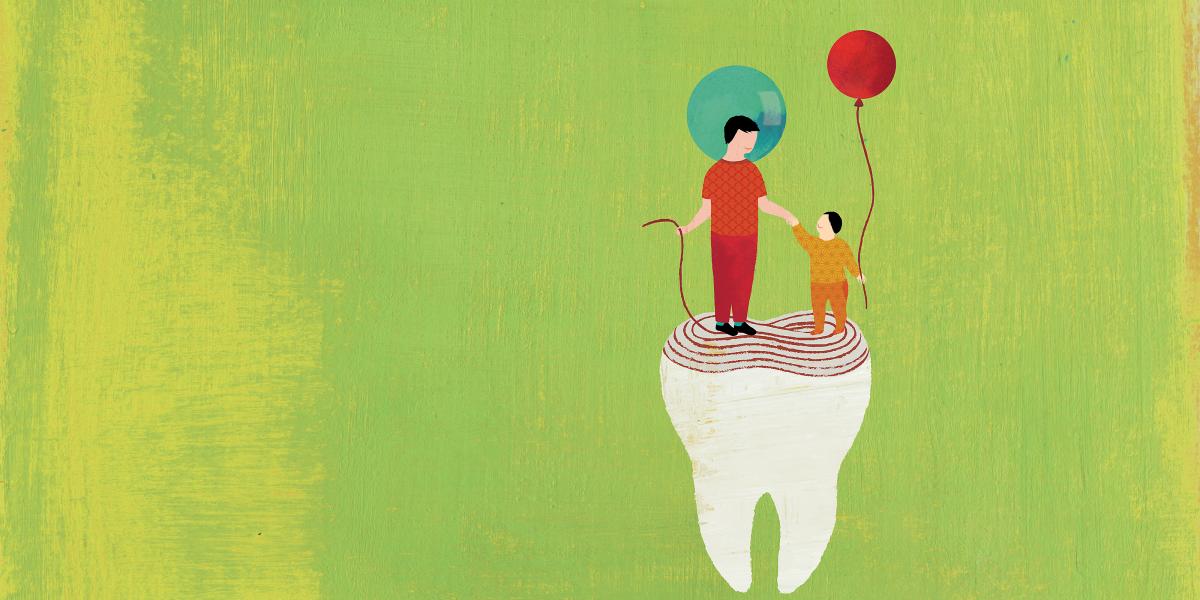The Tooth Fairy in the Lab
Seven years ago, Holly and Rob Waldman’s second child, John Michael, was diagnosed with autism after an intense day of testing at the Kennedy Krieger Institute, a Johns Hopkins affiliate that specializes in treating neurological disorders.
At the time, Holly was early in her pregnancy with her third son, Gavin. “I just said, ‘Oh my God,’” Holly remembers. “What will this mean for our new baby?”
Doctors there admitted that they didn’t know. Studies have shown that siblings of children with autism have a significantly higher risk of eventually being diagnosed themselves: Their risk is about 1 in 8, as opposed to 1 in 68 for the general population. But, they told Holly, she might be able to help them better understand the complicated interplay between genetics and environmental factors that are thought to contribute to autism by participating in a study known as EARLI (Early Autism Risk Longitudinal Investigation).
To examine environmental exposure to chemicals and metals during gestation—a particularly vulnerable time for neurological development—study investigators at the Bloomberg School, Drexel University, the University of California-Davis, and Kaiser Permanente’s Northern California Division of Research have collected blood, placenta, first meconium (a baby’s earliest stool) and dust from the homes of younger siblings of children diagnosed with autism. Now, the EARLI Study has joined other autism cohorts as part of a larger project called ECHO (Environmental influences on Child Health Outcomes) and they’re looking at a surprising sample: baby teeth. It turns out that examining baby teeth is an ideal way not only to detect exposures in the womb, but to identify approximately when such exposures occur, according to Heather Volk, PhD, MPH, assistant professor in Mental Health, who is leading Hopkins’ portion of this project with M. Daniele Fallin, PhD, director of the Wendy Klag Center for Autism and Developmental Disabilities. Hopkins is one of 13 sites seeking to recruit 1,400 families who were in previous autism studies to participate in the ECHO effort.
“Baby teeth form during gestation like rings on a tree,” Volk explains. “We can actually count back to the inside of the tooth to tell us when exposures occurred during embryonic or fetal development, which can give us clues to which parts of gestation are most vulnerable to environmental insults.” A technique developed at the Icahn School of Medicine at Mt. Sinai allows researchers to test these samples for metals and organic chemicals like pesticides and flame-retardants—contaminants that tend to persist in the environment and have been linked with other developmental problems.
To make participating easier for parents, those who volunteer will receive a kit with tubes for collecting four teeth, along with $1 bills from the tooth fairy. Volk and her colleagues hope to have preliminary results in a year to 18 months.
Years of follow-up after Gavin Waldman’s birth have shown that he does not have autism, Holly says. But the data that the Waldman family and others have provided could help researchers identify risk factors for autism, detect the disorder earlier and perhaps develop new treatments. “It’s an easy way to help other families avoid the anxiety of wondering ‘what if,’ for their own child,” says Holly Waldman.
